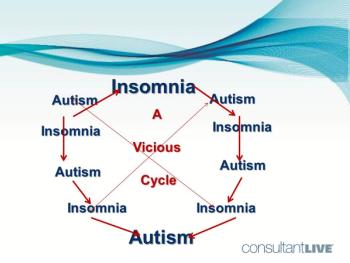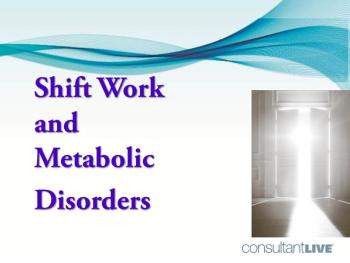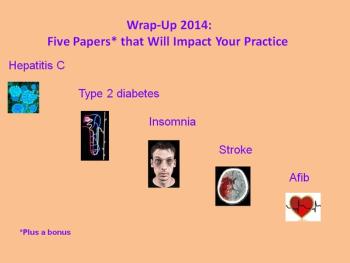
Irregular sleeping patterns can increase risk of depression and lower daily mood over the long term, according to a new study of first-year medical students.

Sleep Duration May Have Greater Cardiometabolic Impact on Women vs Men

Irregular sleeping patterns can increase risk of depression and lower daily mood over the long term, according to a new study of first-year medical students.

Pain specialist Steven King, MD, highlights a new review that looks at the complex, bidirectional relationship between sleep disturbance and chronic pain.

Test your knowledge of the products of climate change and the health effects they may have.

Increases in diabetes, insomnia, and skin cancer are just 3 of the hazardous trends identified in recent research. More findings in our slide show.

Obstructive sleep apnea ups the risk for many other health issues. Click through a 6-slide summary of updated recommendations.

Obstructive sleep apnea, common in patients who have asthma, may contribute to severe exacerbations.

And the parameters of hypoxemia may be more sensitive than the apnea–hypopnea index.

Physicians who aren't alert to the perils of sleep deprivation may not be able to give patients the advice they need. Take this test as a wake-up call.

Hypertension, diabetes, depression, obesity-just a few of the chronic ills that affect persons with sleep insufficiency. Catch up on your sleep facts and figures in these 10 slides.

Common sleep disorders appear to worsen insulin resistance, glucose intolerance, and pancreatic endocrine dysfunction. Here, a closer look at how.

Parasomnias result from a blurring between stages of sleep. See if answers to any of these 6 questions are clear to you.

Insomnia is the predominant sleep disorder seen in autism spectrum disorder. The deficits of each condition compound those of the other.

Diabetes, obesity, CVD-all have been linked to disruption of the day-night rhythm caused by shift work. More facts and some tips for your shift-weary patients, here.

How much less sleep do insomniacs get? What causes brainstem hyperarousal? Is insomnia heritable? If you snooze, you lose on this quiz!

The association remained statistically significant even after adjusting for age, waist circumference, smoking, and other confounders.

Good physical and social functioning may help avert insomnia in older people with musculoskeletal pain.

New therapeutic avenues for improving the synchronization of the body’s various clocks may be opening up.

The odds of children becoming overweight go up with sleep-disordered breathing and short sleep duration, underscoring the need for early identification of these risk factors.

The risk of new-onset obstructive sleep apnea appears to be greater in persons who have asthma. Treating one may help the other.

Sleep and the circadian system play a key role in cardiovascular health and antitumor activity. While disrupting sleep patterns, night shift work also increases the risk of mortality.

Previous studies have shown a link between sleep stages and mental decline. This is the first to show that certain sleep features are related to brain changes.

New drugs that treat stubborn illness seen often in primary care lead this group of Top 5 Papers for 2014. Type 2 diabetes, cryptogenic stroke, and hep-C are key targets.

The older the age at which self-reported sleep disturbance was indicated, a Swedish study found, the higher the risk of Alzheimer dementia.

Difficulty with sleep is a common problem for people with chronic pain. Plus, it is well known that while pain medications cause sedation, they can also disrupt normal sleep cycles.
